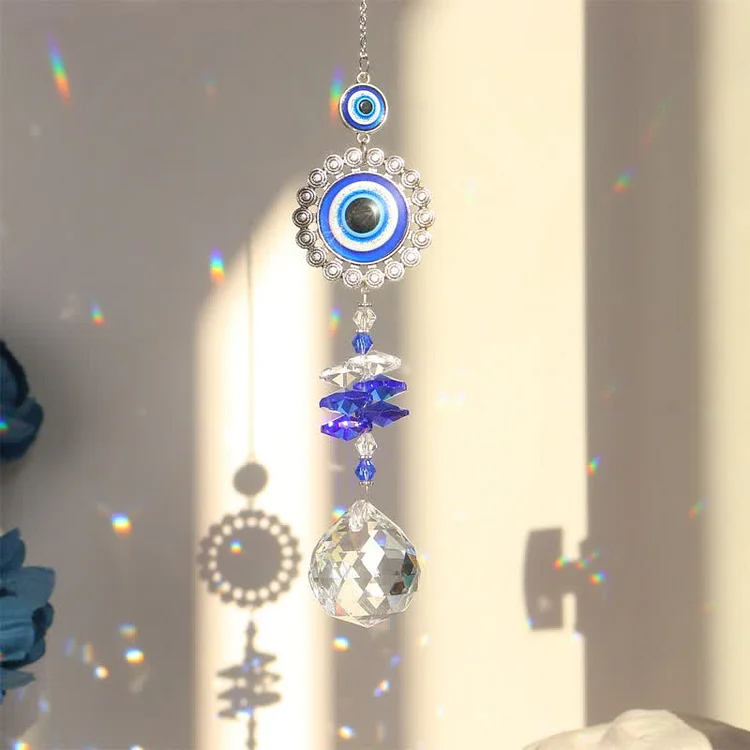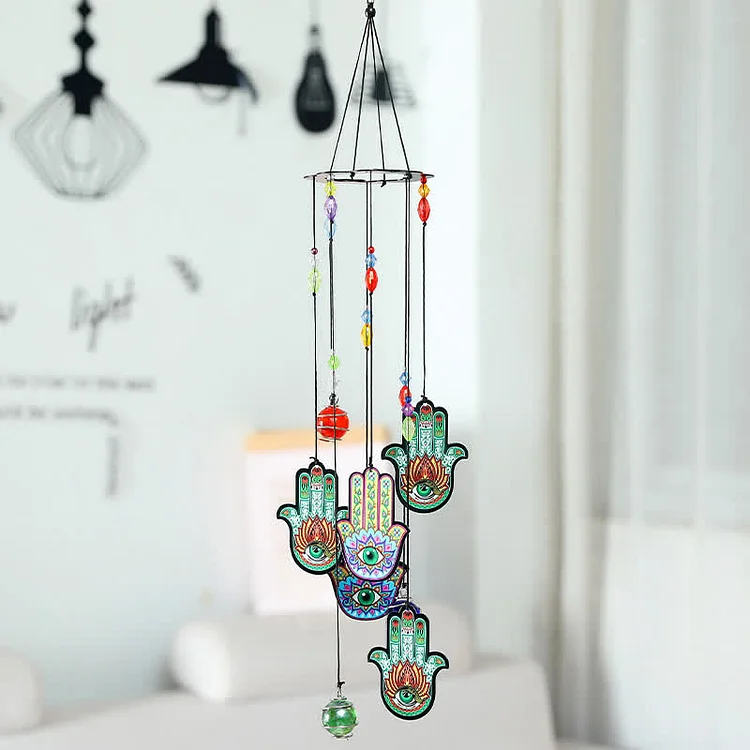The Application of the Evil Eye Symbol in Talismans
Jan 03, 2024
This passage will lead you to:
Introduction to the Evil Eye Symbol
Evolution of the Evil Eye Symbol in Talismans
Cultural Interpretations of the Evil Eye Talismans
Symbolic Meanings and Beliefs
Design and Aesthetics of Evil Eye Talismans
Evil Eye Talismans in Modern Culture
The Making of Evil Eye Talismans
Conclusion
Introduction to the Evil Eye Symbol
The Evil Eye symbol stands as a captivating emblem with deep historical roots, spanning various cultures and epochs. Originally emerging in the Mediterranean and West Asia, this symbol has been a cornerstone of folklore and mysticism. It embodies the human desire for protection against misfortune and malevolent gazes. Over centuries, the evil eye has evolved beyond a mere superstitious motif; it has woven itself into the fabric of cultural practices and beliefs, manifesting in art, jewelry, and most notably, talismans. This symbol, often depicted as a striking eye, serves as a guardian against negativity, offering a sense of security and spiritual safeguard to those who adorn it.
Evolution of the Evil Eye Symbol in Talismans
Tracing the Evil Eye symbol through history reveals its remarkable transformation from an abstract concept to a tangible guardian in the form of talismans. Originating from ancient Mediterranean and Middle Eastern beliefs, the symbol was initially thought to be a malevolent glare that could bring misfortune. As this notion spread across cultures, the need to counteract this negative force led to the creation of physical embodiments: the talismans. These objects, adorned with the eye symbol, evolved from simple designs to intricate artistic representations, each culture adding its unique flair. From the azure beads in Turkey to the elaborate charms in Greece, these talismans became not just protective artifacts but also a symbol of cultural identity and continuity. Their evolution reflects humanity's enduring quest to ward off the unseen and the unknown, making the evil eye talisman a timeless testament to human resilience and creativity.
Cultural Interpretations of the Evil Eye Talisman
The Evil Eye symbol, when integrated into talismans, reveals a rich tapestry of cultural interpretations. In Greece, the symbol takes the form of a striking blue charm, believed to repel negative energy and bring good luck. This specific hue of blue is thought to symbolize the sky or divine protection, creating a strong visual and spiritual impact. Meanwhile, in Brazil, the evil eye is a versatile adornment in daily fashion, often incorporated into jewelry. It's not just a protective emblem but a fashionable accessory, seamlessly blending tradition with contemporary style. This variety in interpretation and application highlights the symbol's universal appeal and adaptability. Across different societies, the evil eye talisman serves as a bridge between ancient beliefs and modern expressions, resonating profoundly with a diverse range of cultural identities and practices.
Symbolic Meanings and Beliefs
The Evil Eye symbol is steeped in a rich tapestry of meanings and beliefs, transcending its ornamental value. Traditionally, it's seen as a powerful shield against negative energies, particularly envy and misfortune. This symbol, often depicted as an eye, is believed to reflect the malevolent gaze, thereby protecting the wearer. Over the centuries, this belief has manifested in various forms of jewelry and decorative items, becoming a staple in protective and spiritual accessories. Olivenorma, recognizing the enduring significance of this symbol, offers an exquisite range of products featuring the evil eye. From elegant necklaces to stylish bracelets and even decorative pyramids, each piece is crafted to not only embody the protective essence of the evil eye but also to add a touch of elegance and personal expression. These items serve as a modern interpretation of an ancient belief, seamlessly integrating timeless protection into contemporary lifestyle.
Design and Aesthetics of Evil Eye Talismans
The mesmerizing allure of the Evil Eye symbol in talismans is not just a matter of belief but also a testament to its captivating design and aesthetics. This emblem, rooted in ancient folklore, transcends cultural boundaries, seamlessly integrating into modern fashion and decor. In this exploration, we highlight the artistic incorporation of the evil eye in various objects, underscoring its role as a protective and decorative element. Our focus zeroes in on Olivenorma’s exclusive range, which showcases the symbol in a variety of forms - from elegant necklaces to chic bracelets, beautiful decors, unique design bags, and even the intriguing design of pyramids. Each piece from Olivenorma is crafted to embody the essence of the evil eye, blending tradition with contemporary style. This fusion not only enhances the visual appeal but also infuses a sense of security and positivity in daily life. Whether as a personal accessory or a home adornment, these talismans serve as a stylish reminder of protection and good fortune.
Evil Eye Talismans in Modern Culture
Talismans with the Evil Eye symbol in Modern Culture have become a fascinating emblem, seamlessly integrating into the realms of high fashion, popular art, and spiritual practices. This ancient symbol, believed to offer protection and wisdom, resonates deeply with contemporary audiences. Its intriguing allure is not just in its visual charm but in its ability to connect the modern individual with a lineage of ancient knowledge and safeguarding. Olivenorma's collection brilliantly captures this essence, offering a range of products that embody the symbol's powerful message. From protection necklaces to bracelets, and even decorative pyramids, each item is a blend of style and spiritual significance. These pieces are not just accessories; they are modern interpretations of an age-old symbol, crafted to bring a sense of security and continuity in the rapidly evolving world. Olivenorma thus provides a tangible connection to this enduring symbol, making it relevant and accessible to today's culturally conscious individuals.
The Making of Evil Eye Talismans
The Making of Evil Eye Talismans is a captivating journey that marries ancient traditions with contemporary flair. Artisans skilled in this craft delicately blend time-honored techniques with modern innovations. While traditionalists may prefer glass or ceramics, echoing practices centuries old, modern creators often turn to plastics or even digital designs, showcasing the symbol's versatility. With the diversification of production materials, gorgeous materials such as crystals are also used in the design of the evil eye symbol. This harmonious blend of old and new emphasizes the evil eye's enduring relevance. Olivenorma's collection exemplifies this beautiful synthesis. Each piece, be it a necklace, bracelet, or even a pyramid, is a testament to quality craftsmanship. These talismans are more than mere accessories; they are a bridge between the past and present, embodying the mystical aura of the Evil Eye symbol. Wearing an Olivenorma creation is not just a style statement but a nod to a rich cultural legacy, offering both beauty and a sense of protection in today’s dynamic world.
Conclusion
The evil eye talisman, a symbol steeped in history, continues its legacy as a powerful emblem of protection and cultural identity. Its evolution from an ancient amulet to a contemporary icon highlights humanity's constant search for security and connection in a changing world. At Olivenorma, we deeply appreciate this symbol's journey and its significance in our lives. The talisman with the Evil Eye symbol transcends being merely an accessory; it stands as a beacon of hope, guarding against the unseen forces of envy and negativity. It's a testament to our shared histories and a reminder of the timeless human desire to safeguard ourselves and our loved ones. Olivenorma proudly embodies this legacy, offering products that are not just beautiful but imbued with meaning and tradition. This symbol's relevance today is a powerful reminder of our interconnectedness and the enduring nature of our collective aspirations.



















